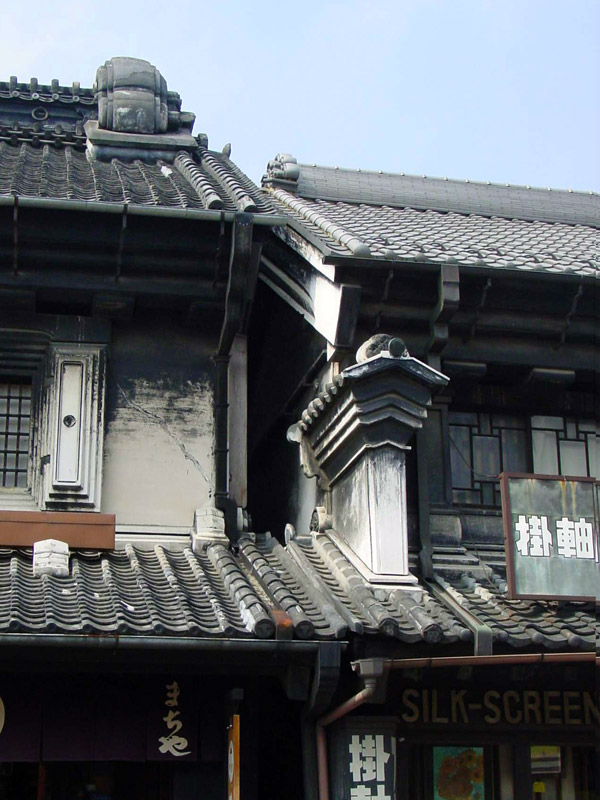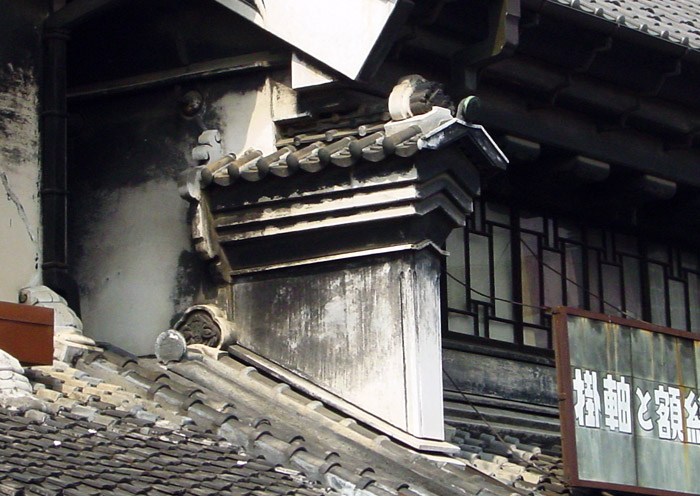|
||
 |
||


Koyano 小谷野 house (Saitama)
(C)2001 Japanese Architecture and Art Net Users System. No reproduction or republication without written permission.
掲載のテキスト・写真・イラストなど、全てのコンテンツの無断複製・転載を禁じます。
|
||||||
| sodeudatsu 袖卯立 | ||||||
| KEY WORD : architecture / folk dwellings | ||||||
| Lit. sleeve udatsu. Extensions of the gable parapet walls *udatsu 卯立, to form lateral screens at one or both ends of the upper-floor, called *tsushi nikai 厨子二階 or honnikai 本二階, of the street facade in urban vernacular houses *machiya 町家. Sodeudatsu fill the trapezoidal space between the overhanging eaves of the main roof and the pent roof *hisashi 廂, below. They appear to have originated in the late Muromachi period. Originally, they were thatched or shingled and the timber frame was exposed while the interstices were plastered *shinkabe-zukuri 真壁造. In the Edo period they were often tiled and entirely cased in fireproof plaster *ookabe-zukuri 大壁造. Molded plasterwork or incised decoration was a feature of some late Edo and Meiji periods examples. In the latter Edo period abbreviated examples in the upper parapet walls were omitted. Sodeudatsu were a status symbol, originally the prerogative of more wealthy householders. In functional terms, they served as a visual screen for upper floor interiors, and also, depending on their construction, as a firebreak. | ||||||
  Koyano 小谷野 house (Saitama)
|
||||||
| REFERENCES: | ||||||
| EXTERNAL LINKS: | ||||||
| NOTES: | ||||||
(C)2001 Japanese Architecture and Art Net Users System. No reproduction or republication without written permission. 掲載のテキスト・写真・イラストなど、全てのコンテンツの無断複製・転載を禁じます。 |
||||||